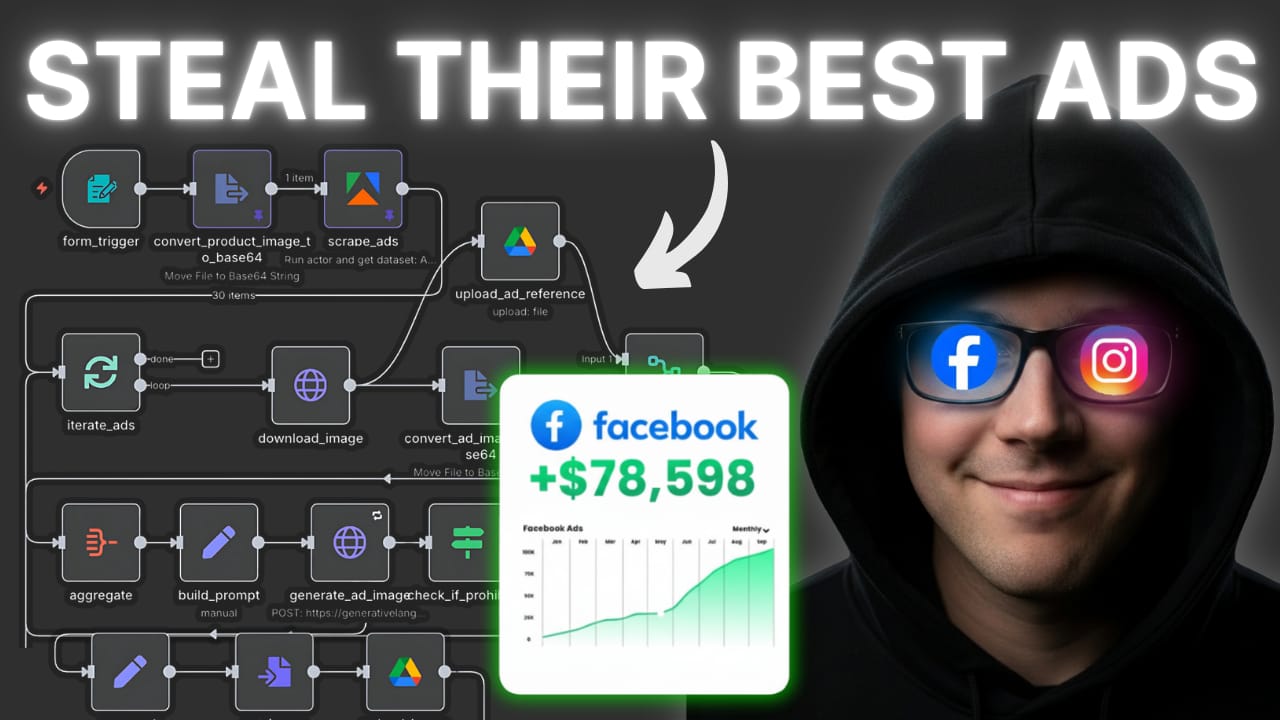- The Recap AI
- Posts
- Google's new protocol teaches AI to spend money
Google's new protocol teaches AI to spend money
PLUS: Nothing's $200M AI device plan and YouTube's creator co-pilot
Good morning, AI enthusiast.
Google just launched a protocol that could fundamentally change how AI agents interact with money. Partnering with over 60 companies including Mastercard, American Express, and Coinbase, they've created AP2 which is a standardized system for AI-driven transactions using cryptographically-signed mandates.
This isn't just about payments; it's about transforming AI from passive assistants into active economic participants. With secure, auditable transactions now possible, your AI could soon book flights, negotiate deals, and manage subscriptions autonomously.
In today's AI recap:
Google's AI payment protocol goes live
Nothing raises $200M for AI-native devices
Labs spend $1B+ on AI training environments
YouTube launches AI co-pilot for creators
Disney sues Chinese AI firm over IP theft
Google Teaches AI Money

The Recap: Google, alongside over 60 partners including Mastercard, American Express, and Coinbase, launched a new open protocol to standardize how AI agents make purchases.
Unpacked:
The protocol, called AP2, uses cryptographically-signed mandates to ensure every AI-driven transaction is secure, auditable, and explicitly approved by the user.
It is designed to be payment-agnostic, supporting everything from traditional credit cards to stablecoins, with collaborators like Coinbase and the Ethereum Foundation building out crypto integrations.
This effort builds on Google's Agent2Agent (A2A) framework, signaling a broader strategy to create a full ecosystem where different AI agents can communicate and transact with each other.
Bottom line: This protocol establishes a common language for AI-driven commerce, enabling agents to move from assistants to economic actors. It paves the way for a future where your AI can securely book travel, negotiate purchases, and manage subscriptions on your behalf.
Your Boss Will Think You’re an Ecom Genius
If you’re optimizing for growth, you need ecomm tactics that actually work. Not mushy strategies.
Go-to-Millions is the ecommerce growth newsletter from Ari Murray, packed with tactical insights, smart creative, and marketing that drives revenue.
Every issue is built for operators: clear, punchy, and grounded in what’s working, from product strategy to paid media to conversion lifts.
Subscribe for free and get your next growth unlock delivered weekly.
AI Tools of the Day
🤖 VoAgents - Deploy autonomous AI voice agents to handle real-time phone calls and schedule appointments 24/7 for your business.
💻 Cline - Supercharge your development workflow with an AI coding agent that lives in VS Code to edit files and execute terminal commands.
🎵 Suno - Instantly create original, high-quality songs complete with vocals and instrumentation from just a simple text prompt.
🎲 NLevel.ai - Generate complete, game-ready 3D models with textures directly from text descriptions or image inputs.
🔍 NeuraVid - Instantly find any spoken word or visual moment across your entire video library using powerful semantic search.
📊 GPTExcel - Generate complex formulas and scripts for Excel, Google Sheets, and Airtable without needing to be a spreadsheet expert.
✨ Whimsical AI - Transform your raw text into clear flowcharts and mind maps to instantly visualize complex ideas and workflows.
📲 InboxBites - Turn your cluttered newsletter subscriptions into a swipeable feed of 50-word insights to consume content 10x faster.
Explore the Best AI Tools Directory to find tools that will 10x your output 📈
Nothing's AI-Native Pivot

The Recap: Consumer tech brand Nothing raised $200M at a $1.3B valuation, announcing an ambitious plan to launch its first 'AI-native devices' next year powered by a new, intelligent operating system.
Unpacked:
Nothing envisions a future with a hyper-personalized experience where the OS knows its user deeply, adapts interfaces to their context, and uses AI agents to execute tasks on their behalf.
The company's long-term goal is to build an OS that extends beyond smartphones, powering future devices like smart glasses, audio products, humanoid robots, and even electric vehicles.
This move comes as the dedicated AI hardware market faces hurdles, with startups like Rabbit working to improve its R1 device after a rocky launch.
Bottom line: This funding positions Nothing to make a serious play in the integrated AI hardware space. The company is betting that the future of personal computing relies less on apps and more on intelligent systems that anticipate and act on user needs.
AI Training
The Recap: In this video, I'm going to show you how to build an AI automation that's able to analyze the best performing live ads that your competitors are running on Facebook and Instagram. It's going to find the best ads, download the ad creative, and then spin that ad creative to promote your product or service offering.
P.S. We also launched a free AI Automation Community for those looking to build and sell AI Automations — Come join us!
AI's New Training Ground

The Recap: Top AI labs are shifting their focus to reinforcement learning environments—complex, simulated workspaces where AI agents learn multi-step tasks to become more capable.
Unpacked:
The investment in these environments is substantial, with leaders at Anthropic reportedly discussing a spend of over $1 billion to develop AI agents that can function as digital co-workers.
While the concept isn't new—OpenAI introduced RL Gyms back in 2016—the current push applies these techniques to large transformer models for more general-purpose tasks.
A new ecosystem is emerging to meet this demand, including startups like Prime Intellect, which recently launched an open hub for developers to share and access these training environments.
Bottom line: This trend marks a critical shift from training AI to generate content to teaching it how to perform complex actions. Success here could unlock the next generation of truly helpful AI assistants that can autonomously manage digital workflows.
Where AI Experts Share Their Best Work
Join our Free AI Automation Community
Join our FREE community AI Automation Mastery — where entrepreneurs, AI builders, and AI agency owners share templates, solve problems together, and learn from each other's wins (and mistakes).
What makes our community different:
Real peer support from people building actual AI businesses
Complete access to download our automation library of battle-tested n8n templates
Collaborate and problem-solve with AI experts when you get stuck
Dive into our course materials, collaborate with experienced builders, and turn automation challenges into shared wins. Join here (completely free).
YouTube's AI Co-Pilot

The Recap: At its annual Made on YouTube event, the company unveiled a suite of new AI tools designed to help creators generate ideas, produce content, and optimize their channels.
Unpacked:
Google's Veo 3 model is now integrated into YouTube Shorts, letting creators generate video clips and backgrounds from simple text prompts.
A new conversational tool called Ask Studio acts as an AI chatbot, allowing creators to ask questions about their channel's performance and get data-driven suggestions.
The platform is expanding its A/B testing to cover both titles and thumbnails, helping creators find the combination that drives the most watch time.
Bottom line: These tools help automate the heavy lifting of content strategy, freeing up creators to focus on their unique ideas. This move also shows platforms are taking a more direct role in guiding content creation to keep audiences engaged.
The Shortlist
Disney sued Chinese AI firm MiniMax, along with Universal and Warner Bros., for copyright infringement over its Hailuo AI service that allegedly generates famous characters like Darth Vader and Wonder Woman without permission.
OpenAI rolled out new safety measures for ChatGPT users under 18, introducing age-appropriate content policies, parental controls, and protocols for contacting authorities in cases of acute distress.
Tencent launched Hunyuan3D 3.0, its latest ultra-HD 3D generation model, which features a 1536³ geometric resolution and 3.6B voxel modeling to create lifelike faces and details.
What did you think of today's email?Before you go we’d love to know what you thought of today's newsletter. We read every single message to help improve The Recap experience. |
Signing off,
David, Lucas, Mitchell — The Recap editorial team



